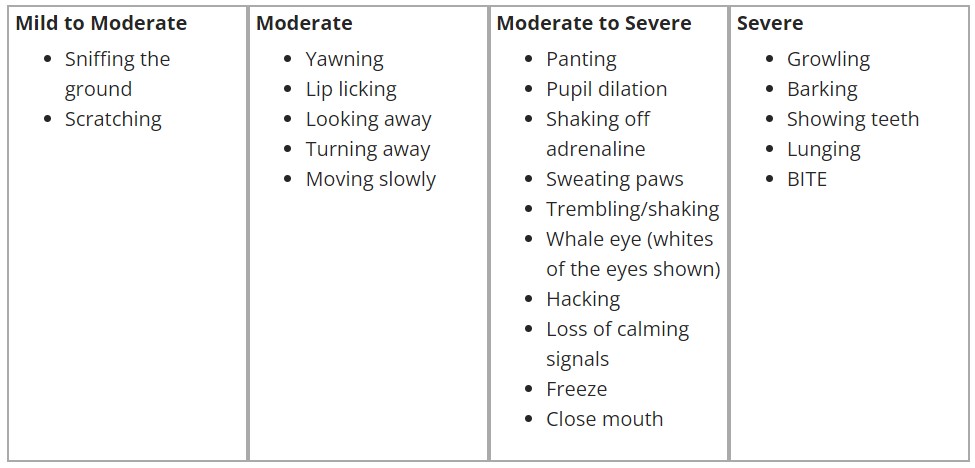Using the Stress Ladder to Understand Your Pet's Behavior
Posted by By My Happy Pets on Apr 4th 2022
Behavioral issues are thought to affect at least 90 percent of dog and cats. In the U.S. alone, that means nearly 60 million dogs and 68 million cats are experiencing a regular, negative reaction to something that is causing them anxiety or stress.
Similar to stress and anxiety in humans, the causes and effects can vary greatly. And for pets, the issue can be literally life or death: behavioral issues are the #1 cause of euthanasia in pets. If pet parents know what to look for, they can work with their veterinarian to treat behavioral issues before they escalate.
What is the stress ladder?
The “stress ladder” is a term given to a scale that measures signs or symptoms of pet behavioral issues. Less severe reactions (such as yawning) fall towards the bottom of the ladder, while more serious reactions (such as aggression or biting) rate near the top of the ladder.
Here are some examples of common signs of behavioral issues and where they would typically fall on the stress ladder:

In most cases of extreme behavioral issues, there are many small signals that were likely missed along the way. The stress ladder scale is a simple guide to help you identify your pet's stress signals so you can intervene and help them before they move up the ladder.
Remember: all animals are different, so the way they react under stress can vary greatly.
Recognizing your pet is experiencing stress and anxiety
When trying to understand your pet's behavioral issues, it's important to keep in mind that even seemingly minor symptoms can, over time, take a major toll on your pet’s health. If your pet is exhibiting signs of stress, the best thing you can do is talk with your veterinarian about strategies and treatments to bring them back to baseline. The higher up the stress ladder your pet is when you recognize there is a problem, the more challenging it will be to bring them back to baseline.
At lower rungs of the ladder, simply taking your pet to their "safe space," comforting them, or providing a calming nutraceutical may be enough to get them back to baseline. At higher rungs of the ladder, your veterinarian may recommend medication and/or visiting a board certified behaviorist to get to the bottom of the issue. A great resource for finding a board certified behaviorist near you can be found here.
Understanding your pet's behavior can be challenging, but it's also an integral part of their overall wellness. The stress ladder is a helpful tool to understanding how small changes in your pet's behavior can snowball into a much bigger, and more dangerous problem over time. When vising your vet, don't hesitate to bring up any questions or concerns you might have regarding your pet's behavior!

